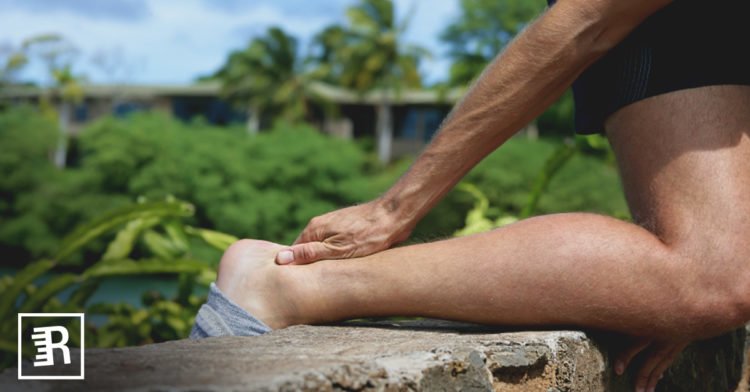It’s surprising how many runners experience issues with their Achilles. If you have ever had a flared up Achilles before, you’ll know just how frustrating and painful the inflammation is. Some runners are out for weeks , if not months as a result and annoyingly progress becomes much slower.
Often people find that over the counter meds such as Naproxen don’t seem to do much in terms of getting rid of the issue altogether. However, it’s common that runners will turn to alternative methods such as friction massages, rolling and ice to ease pain and speed up recovery.
Achilles tendinitis treatment – initial steps
Elite athlete trainer and acupuncturist Bruce Mandelbaum covers this topic in his work and gives some good advice. He advises injured runners that whilst rollers are great for tight calf muscles, forced friction massages works against the grain of the muscle and goes far deeper.
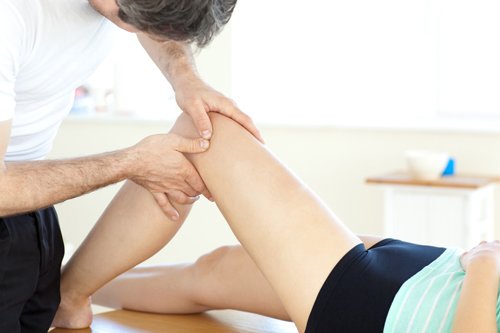
The massage therapists work their thumbs in as far as they can and go back and forth. Bruce in fact teaches you how to do this yourself in his Youtube video step by step. If you look at the comments you'll see that many have used this simple therapeutic technique after the roller and have found it highly successful.
Even though this article is about which exercises you can do immediately without having to go to a professional, it’s good to know your options. You may also want to buy an ankle support to ease you into running when you have recovered.
Apart from this, the key things will be maintaining a regular routine and program of stretches to boost recovery. It’s important to remember however; when you return to running you will need to ease back into things very gently.
Use other forms of exercise in the meantime to keep up your anaerobic fitness such as cycling, swimming and resistance workout. These are lower impact and will make it easier when you return to running to pick up where you left off.
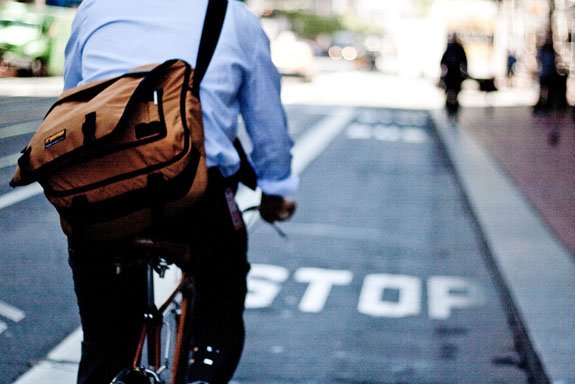
The Achilles Tendon and its Role in Running?
The Achilles is a group of tendons or fibrous tissues that connect muscles to our bones. When we run, the muscles contract and pull on the tendon so the bone can move. The Achilles and calf muscles are closely connected as the tendon attaches the two calf muscles together and connects them to the heel bone.
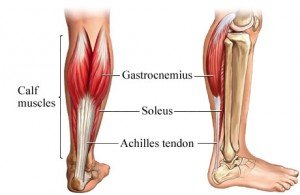
During movement, the calf muscles pull on the Achilles making toes go down so you can come up to the ball of your foot. Essentially, this is the push off phase of the gait cycle when we are running. As you can see, this group of muscles and tendons are instrumental in the runner’s motion and is especially powerful when sprinting.
So how does someone get Achilles Tendonitis?
Despite it being one of the toughest tendons in our bodies, the Achilles is also highly susceptible to injury due to the sheer amount of pressure it has to undertake. Tendonitis occurs normally through overuse and is usually experienced by runners or tennis, basketball and volleyball players. Another reason people get tendonitis is because calf muscles are so tight. The main issue is that the tendon is inflamed and the fibers have become psychically damaged.
There are different levels of severity when it comes to tendonitis. You may get an acute pain which lasts for a couple of days or you may experience it chronically so it lasts longer. When you suddenly up the training and experience the inflammation, it’s most likely acute and will be down to speed, hills or distance increases too quickly.
How do you know you have Achilles tendonitis?
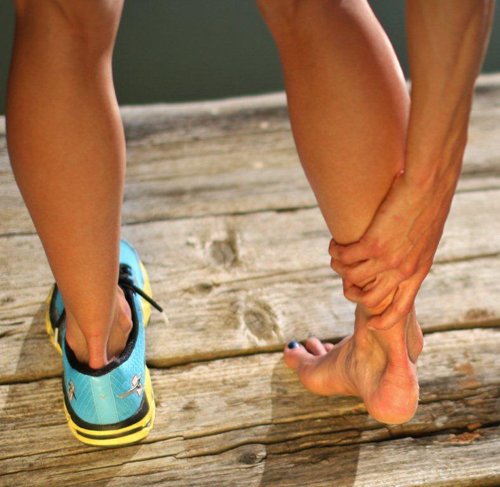
Symptoms of acute tendon inflammation
- Pain worsens gradually over a certain number of days
- Kicks in when you start running but eases as you continue
- After resting the pain eases off
- Your calf muscles or tendons feel sensitive when pressure’s applied
When the acute symptoms continue and go on without treatment, conditions worsen and become trickier to solve. This then leads to chronic Achilles tendon inflammation:
- Pain gradually occurs lasting weeks or even months
- Pain continues or gets worse when running
- Pain is experienced going up hills
- Often worsens in the morning and becomes stiffer
- Lumps can be felt in the tendon
- You experience swelling or have red skin over the area
Now we’ve looked at some of the symptoms experienced with tendonitis, let’s discuss how we can help soothe the issue.
You’ll notice there are lots of calf stretches too as this is essential to loosening the tension and pressure put on the Achilles. When calf muscles are shorter or feel tight more stress is placed on the tendon so it has to work harder.
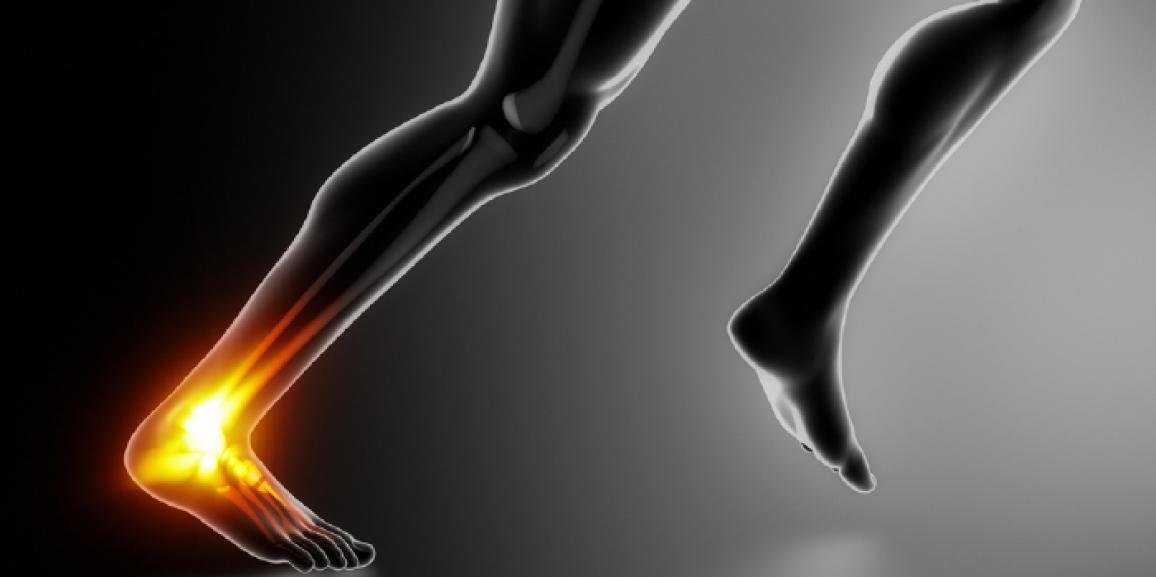
Here are 13 exercises you can do in the comfort of your own home. Do them regularly and you should see significant improvement in the pain and discomfort you experience.
Achilles Tendonitis Treatment: 13 Exercises You Can Do
1. The toe stretch
For this one you’ll need to be sitting in a chair with the problem leg extended and heel resting on the ground.
Now reach towards your big toe and pull it up then back down again (towards the ankle).
Hold for 30 seconds or as long as feels comfortable until you can extend the time.
Repeat 2-4 times and do up to 5 times daily.
Now after getting used to this one, you can move onto the next…
2. Calf-plantar fascia stretch
Extend your legs whilst seated and keep your knees straight.
Tuck a towel just underneath your toes around the painful leg and hold the towel ends in both hands.
Keeping the hands above your knees, pull the towel so your foot comes towards you.
Hold for up to 30 seconds and repeat 4 times daily.
3. The calf stretch
Placing hands on the wall or on the back of a chair/sturdy table, take one step back with your left leg.
Straighten the leg and push your heel into the ground. Pushing hips forward gently, bend the right leg gently.
You should feel a nice stretch in your left calf.
Do 2-4 reps at 30 seconds each.
4. Stair stretch
For this one you want to be standing on the balls of your feet on the edge of your stairs or a big hardback book whilst you hold onto something for balance.
Straighten your injured leg and gradually drop the heel off the stairs until you get a good stretch in your calf. Remember to keep some weight on the other leg.
Hold for 30 seconds and repeat up to 4 times daily. You can do this one whenever you feel tight to release some of the tension.
5. Soleus heel drop
Stand with one leg on a step like before however this time the knee is bent of the leg you want to stretch. The leg should be bent to 45 degrees, then the heel raises higher and lowers back to the horizontal. Start again on the toes and keep heels high with the help of the other leg.
You’ll want to do 15 reps and 3 sets. If you experience pain and discomfort, stick with it until it eases. Try this one daily for a period of 3 months.
6. Gastrocnemius stretch
Lean against the wall as one leg stretches out behind and the other leaning forward; keep the heels flat on the floor throughout this stretch. Hold it for 30 seconds and repeat three times.
Aim to do this stretch a few times every day. It will really help your lower leg and for a deeper stretch, try standing with the bag leg further back. If you want to advance it even further, do the stretch on a step with half foot on and half off.
7. Soleus stretch
The soleus calf muscle is more elusive than most but stretching this one will and paying it a bit more attention can make a huge difference. It’s known for causing runners issues and may be referred to as the gastroc-soleus complex.
You begin by bending your back leg then moving the injured leg behind.
Lean against the wall and keep your heels on the ground. Feel the stretch lower near the ankle and at the lower part of the back leg.
8. The Step Stretch
This one will give you a deeper calf and Achilles stretch. Start by standing on the step with your toes on and heels hanging off. Drop the heels down gently and keep going till you feel the stretch. Grip onto a banister for balance.
Each set should be held for around 20 seconds. Remember to perform a set with your knees straight then another with them bent to get both areas stretched effectively.
9. Achilles Door Stretch
This stretch focuses starts with your toes pulled towards your shins so immediately guarantees an effective release in tension. Simply move forward when you want to feel the stretch deeper.
Start by placing the ball of your left foot on the bottom of a door and keep your heel on the floor. With your right foot, step back. Ensure both legs are straight and put hands on the door.
Now move your hips forward slightly and pull your torso towards the door. You should then feel the stretch in your Achilles on your left side. Hold for 20 seconds then change over.
10. Heel-walking exercise
This exercise is great at decreasing tension in shortened Achilles tendons and will help you prevent further injuries.
Simply lift toes up and put the weight on your heels. Keep toes pointed out to the sides. You will feel your ankles flex and notice a stretch in the posterior tibial tendon. This tendon serves as one of the main supporting structures of the foot and will help strengthen your lower legs.
Do this walking for two minutes at a time.
11. Toe Scrunch exercise
Curl the toes inwards like you’re getting reading to grab something from the floor with your feet and repeat. You can try picking up small objects if this helps achieve the correct motion. This will help stretch and heal feet, a vital connection to the Achilles tendon.
12. Single leg glute bridge for strengthening
You can add a stability ball once you get used to this one for an advanced exercise.
Lying on your back, bend on leg and keep the foot flat on the floor. Bring the other leg in the air making sure there’s a straight line from your hips to your toes. Gently bring your pelvis up by squeezing your glutes and contract your core. Keep shoulders on the ground at all times.
Repeat 20 times with each leg.
13. Donkey kicks with resistance band for strengthening
Begin the exercise on all hours. Get your band and wrap it around one knee and the other round your foot. Then lengthen the leg back and up whilst you contract your glutes.
Repeat 20 times on each leg.
Now you know some powerful stretches and exercises that will bring your Achilles tendon back into good health. Working these into your daily routines should get you back on track and promote healing so you can get back to running pronto.

